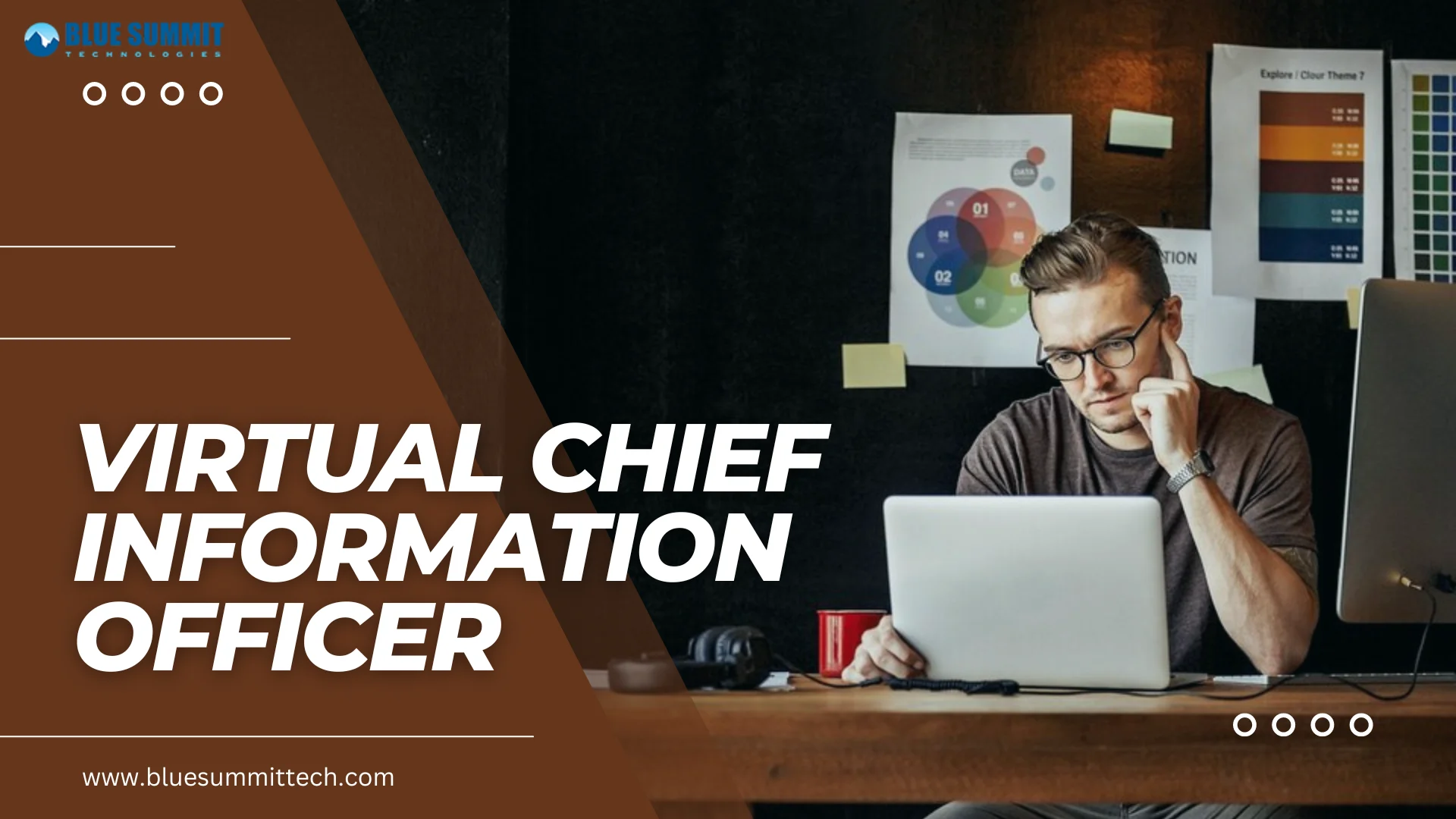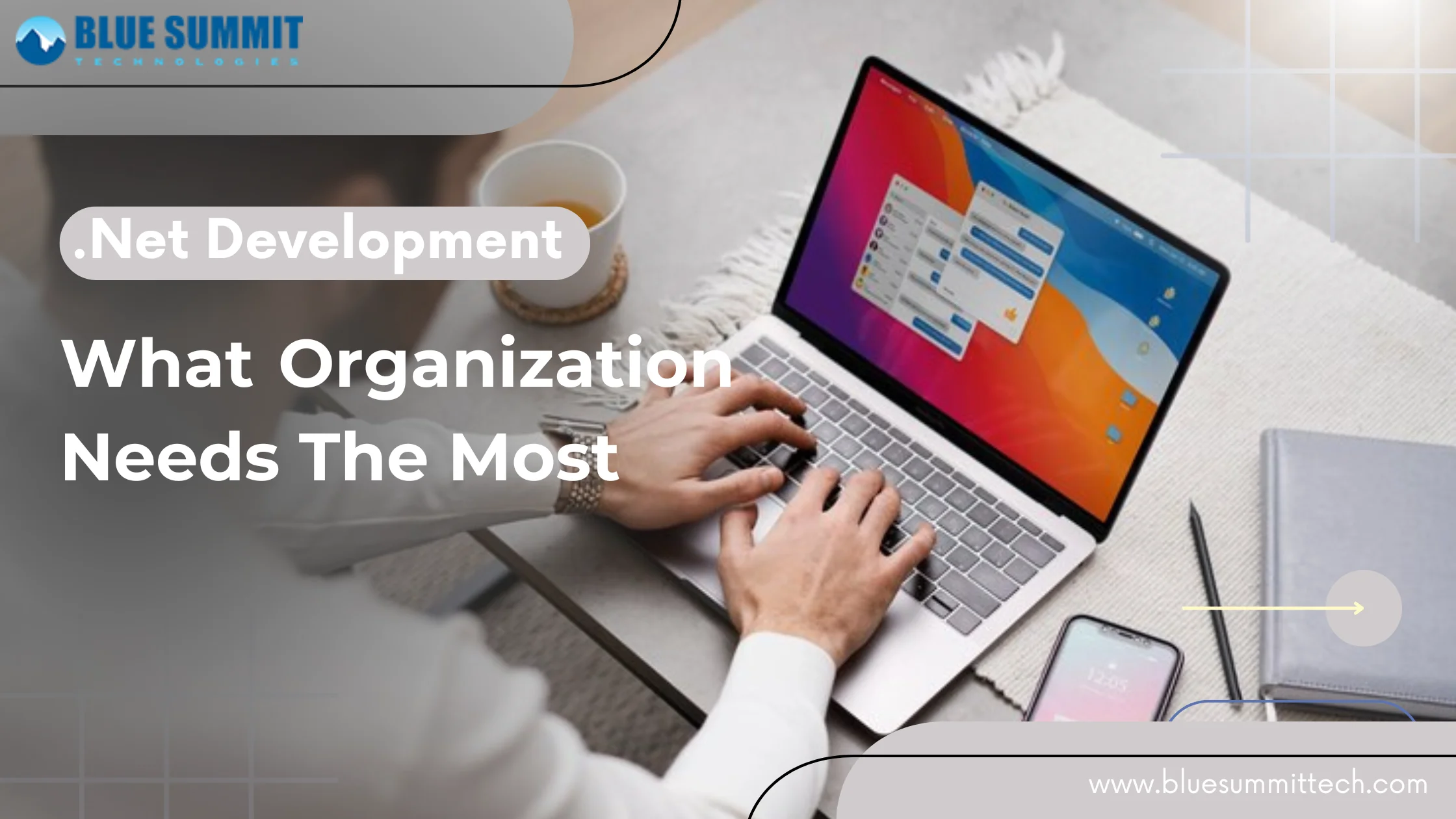
Posted on Friday, Aug 04th, 2023
Why Every Company Needs a vCIO: Transforming Operations with Technology
As the reliance on information technology (IT) continues to grow, the role of a Virtual Chief Information Officer (vCIO) has emerged as a game-changer in transforming how businesses harness the power of technology. By bridging the gap between business strategy and technology implementation, vCIOs play a pivotal role in optimizing processes, mitigating risks, and unleashing the full potential of technology to fuel growth.
What is a Virtual CIO and CIO?
A Virtual Chief Information Officer (vCIO) and a Chief Information Officer (CIO) are both crucial roles within an organization, but they differ in their engagement and responsibilities.Chief Information Officer (CIO)
• The Chief Information Officer (CIO) is an executive-level position responsible for the overall management, implementation, and utilization of information technology within a company.• CIOs are typically employed as full-time, on-site executives who work directly with the organization's leadership and stakeholders.
• Their primary focus is on developing and executing a comprehensive IT strategy aligned with the company's business goals.
• They oversee the IT department, making decisions related to technology investments, infrastructure, security, software development, and IT policies.
• They play a central role in ensuring that technology initiatives contribute to the organization's growth, efficiency, and competitive advantage.
Virtual Chief Information Officer (vCIO)
• A Virtual Chief Information Officer (vCIO) is an outsourced or remote professional who provides CIO-level strategic guidance and technology expertise to businesses without having a permanent, on-site presence.• Many small and medium-sized enterprises (SMEs) may not have the resources to employ a full-time CIO, and this is where vCIOs come into play.
• They act as external consultants or advisors, collaborating with companies to design and implement effective IT strategies.
• They can work on a part-time or project-specific basis, depending on the organization's needs.
• They offer valuable insights into technology decisions, assist in budget planning, assess security risks, recommend suitable solutions, and align IT initiatives with business objectives.
The Role and Importance of a vCIO
A vCIO plays a crucial role in aligning technology with business goals. They analyze your current IT infrastructure, identify weaknesses, and propose improvements. They collaborate with your team, guiding technology decisions, and ensuring seamless IT operations.Benefits of Hiring a Virtual CIO
Many small and medium-sized businesses choose to use VCIO services due to their limited resources which prevent them from hiring a full-time CIO. They can provide valuable expertise and experience at a reduced cost, making it a desirable option for businesses looking to improve their technology operations without committing to a permanent, high-level executive.Strategic IT Planning with Virtual Chief Information Officer
VCIOs focus on long-term IT planning and alignment with the company's objectives. They analyze the current IT infrastructure, identify areas for improvement, and create roadmaps to implement new technologies or upgrades in a phased manner.Understanding Business Goals
The first step in strategic IT planning is to thoroughly understand the business's goals, mission, and vision. They work closely with the company's management and stakeholders to identify how technology can support and enhance these objectives.1. Technology Roadmap Development
Based on the business goals, the VCIO develops a comprehensive technology roadmap. This roadmap outlines the IT initiatives and projects that need to be implemented over a specific period. It ensures that IT investments are aligned with the organization's growth and development plans.2. Budgeting and Resource Allocation
They collaborate with the finance department and senior management to develop IT budgets that align with the technology roadmap. They prioritize projects, allocate resources, and ensure that the available budget is utilized effectively.3. Risk Assessment and Mitigation
Strategic IT planning involves assessing and mitigating potential risks related to technology. VCIOs identify cybersecurity threats, data privacy concerns, and other IT risks. They implement security measures and disaster recovery plans to protect the organization from potential disruptions.4. Vendor and Technology Evaluation
They continuously assess emerging technologies, vendors, and solutions to identify those that can bring value to the organization. They evaluate the feasibility and impact of adopting new technologies and select vendors that can provide the best-fit solutions.5. Integration of IT with Business Processes
The VCIO ensures that IT solutions are integrated seamlessly into the organization's business processes. They work with different departments to understand their specific requirements and tailor IT solutions to meet their needs.6. Digital Transformation Strategy
With the rapidly evolving digital landscape, VCIOs play a key role in defining the organization's digital transformation strategy. They pinpoint opportunities for automating processes, utilizing data analytics, adopting cloud technology, and implementing other digital initiatives that can improve both efficiency and competitiveness.7. Performance Measurement and KPIs
VCIOs establish key performance indicators (KPIs) to measure the success of IT initiatives and projects. Regular performance evaluations help assess the effectiveness of strategic IT planning and enable adjustments if necessary.8. Change Management and Communication
Implementing new IT strategies often involves organizational change. VCIOs facilitate change management efforts and communicate the benefits and impacts of IT initiatives to all stakeholders, ensuring a smooth transition.VCIO In Collaborating Internal IT Teams
Working together between the internal IT teams and the vCIO is essential for the success of the organization's IT strategy and initiatives.1. Communication Channels
To be effective, the vCIO should establish clear and open communication channels with the internal IT teams. This involves scheduling regular one-on-one and group meetings to discuss progress, challenges, and new developments. Transparency is key to success.2. Understanding Internal IT Capabilities
To allocate responsibilities effectively and utilize existing expertise, the vCIO should have a thorough understanding of the strengths and weaknesses of the internal IT teams.3. Supporting and Empowering Internal IT
The role of a vCIO should not be to replace the internal IT teams. Instead, they should focus on providing support and empowerment to the teams. By offering guidance, mentorship, and training, the vCIO can assist the internal IT teams in growing their skills and knowledge.4. Sharing Strategic Vision
It is important for the vCIO to effectively communicate the strategic IT vision and goals to the internal IT teams. By doing so, the teams can align their efforts with the broader organizational objectives.5. Coordinating Projects and Priorities
A vCIO (Virtual Chief Information Officer) can be of great help in coordinating different IT projects and aligning priorities. Their role is to ensure that all projects are delivered within the scheduled time frame and budget.6. Providing Expertise and Best Practices
Virtual Chief Information Officers (vCIOs) possess a vast amount of experience and expertise that they can bring to the table. They are capable of sharing industry best practices, frameworks, and methodologies that can prove advantageous to internal IT teams.7. Performance and Progress
The virtual Chief Information Officer (vCIO) has the ability to evaluate the effectiveness and advancement of the company's internal IT teams. Additionally, the vCIO can offer helpful advice and feedback to promote growth and development.8. Identifying Skill Gaps and Training Needs
By working together, the vCIO can pinpoint areas where the internal IT teams may lack skills and suggest training programs or certifications to fill those gaps.9. Encouraging Innovation
Encouraging new ideas, experimentation, and exploration of emerging technologies can help the vCIO foster a culture of innovation within the internal IT teams.10. External Expertise
When specialized skills are needed, the vCIO has the ability to bring in external experts or consultants to supplement the internal IT teams.11. Vendor Relationships
The virtual Chief Information Officer (vCIO) is capable of collaborating with vendors and third-party partners to guarantee seamless integration of their solutions into the organization's internal IT infrastructure.12. Change Management
When introducing new IT strategies or technologies, a vCIO can assist in overseeing the transition for both the internal IT teams and the entire organization.Enhancing Cybersecurity Measures
A Virtual Chief Information Officer (vCIO) is essential for improving cybersecurity in any organization. Below are how a vCIO can effectively improve cybersecurity:1. Security Assessments and Audits
The team carries out thorough security assessments and audits to pinpoint any vulnerabilities or weaknesses in our organization's IT infrastructure. This helps to better understand the current security status and any potential risks that may arise.2. Risk Management Strategies
After conducting security assessments, the vCIO devises risk management strategies to tackle the identified risks in an orderly manner. This includes the deployment of security controls, policies, and procedures to alleviate any potential threats.3. Cybersecurity Roadmap
They are responsible for creating a comprehensive cybersecurity plan that is in sync with the objectives of the organization. This roadmap clearly defines the cybersecurity projects, initiatives, and enhancements that must be executed over a period of time.4. Policy Development
They work with the internal IT team to create and revise security policies that regulate the organization's cybersecurity measures. These policies encompass data safeguarding, access controls, incident response, and other related areas.5. Employee Training and Awareness
The virtual Chief Information Officer organizes sessions and programs to train employees on cybersecurity. This promotes a safety-oriented environment and educates staff about prevalent hazards such as phishing and social engineering.6. Vendor and Third-Party Security Assessment
It is important for the vCIO to evaluate the security measures of vendors and third-party partners to ensure that they comply with the organization's security standards. This is essential because any vulnerabilities in third-party systems can also affect the security of the organization.7. Incident Response Planning
One of the functions of a vCIO is to create a detailed incident response plan that outlines the necessary actions to take in the event of a cyber-attack. This plan includes identifying important personnel, setting communication protocols, and outlining remedial measures.8. Security Tool Selection and Implementation
The virtual Chief Information Officer (vCIO) helps in assessing, choosing, and executing cybersecurity tools and solutions that suit the organization's requirements. This may involve firewalls, antivirus software, intrusion detection systems, and other related technologies.9. Continuous Monitoring and Threat Detection
They assist in establishing continuous monitoring systems that can detect any potential threats and security breaches in real-time. This proactive approach enables us to respond promptly to any security incidents that may arise.10. Awareness Training
As the virtual Chief Information Officer, it is their responsibility to make certain that the in-house IT staff is provided with regular cybersecurity training. This will keep them informed about the most recent threats, best practices, and industry trends.11. Security Incident Response Testing
To ensure that the organization is prepared to handle real-life cybersecurity incidents effectively, they conduct periodic security incident response testing and simulations.12. Compliance and Regulation Management
They play a key role in ensuring that the organization adheres to data protection and privacy regulations as well as industry standards.Conclusion
Embracing the power of a Virtual CIO can unlock technology's true potential and drive business success. They serve as a trusted advisor, guiding organizations to make informed decisions about technology investments, infrastructure development, and digital transformation. VCIO services offer a transformative solution, enhancing operational ease and efficiency. With seamless integration, daily activities are executed without deviation, ensuring smooth and optimized workflows.Our VCIO services are delivered at a competitive rate, guaranteeing timely completion of all your requirements.
Blue Summit has collaborated with OdiTek Solutions, a frontline custom software development company. It is trusted for its high service quality and delivery consistency. Visit our partner's page today and get your business streamlined.
REFER TO OTHER RELEVANT CONTENTS

Joomla Development
We are Joomla development specialists. We enjoy creating user-friendly Joomla portals and are constantly eager to discover the finest solution for our clients. For small, medium, and large enterprises of every kind, we have created websites. Check out our portfolio, then let us start working...
read more








